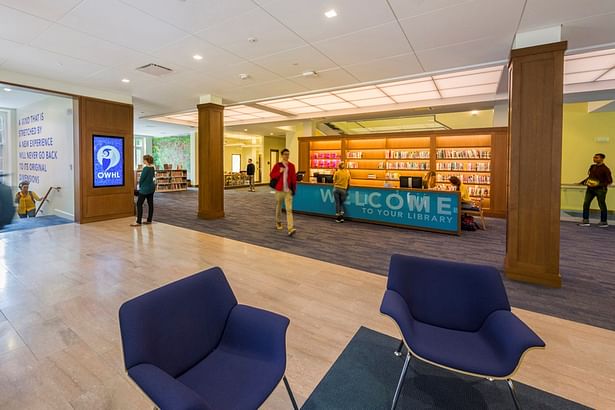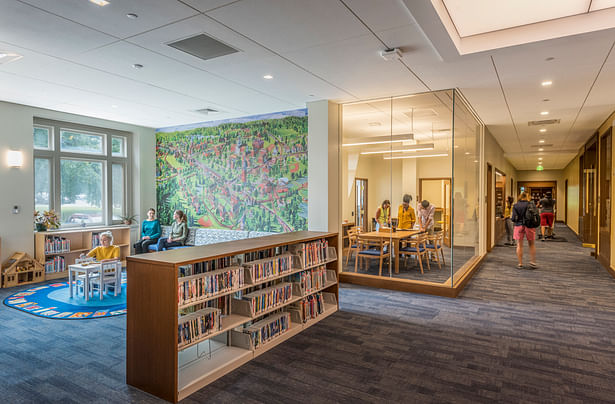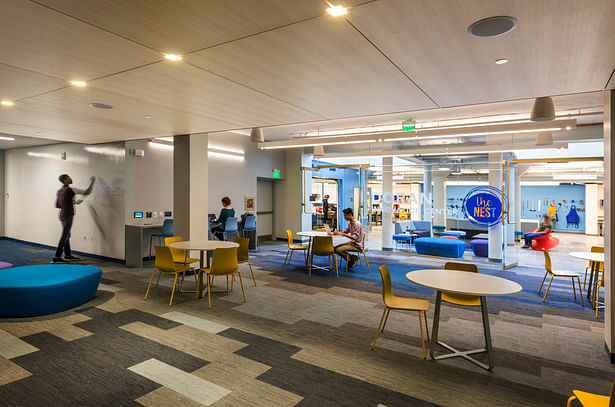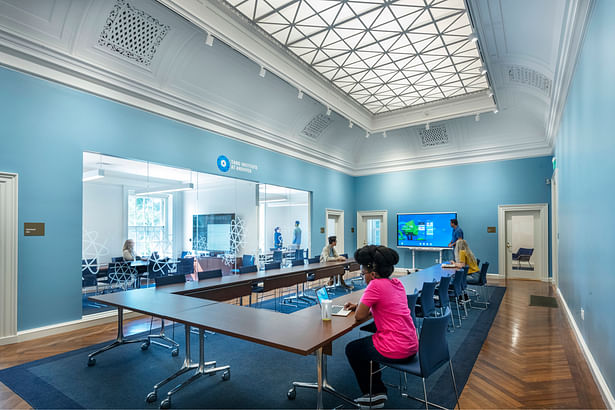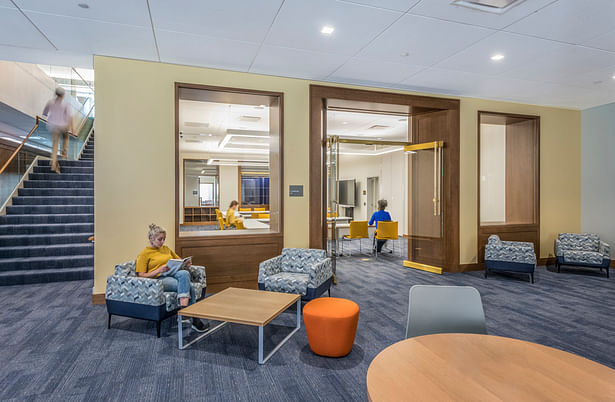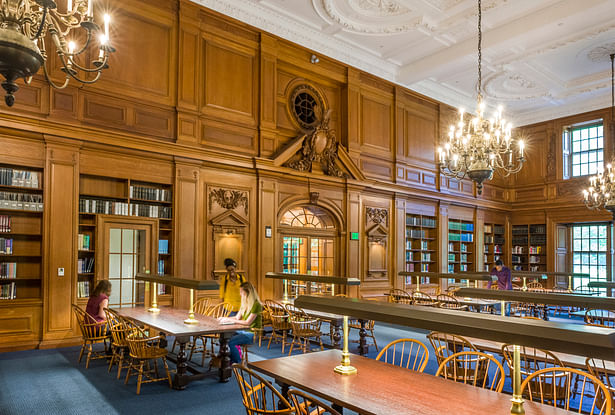

Asian/Pacific Islander owned
Boston, MA

Honored with a Preservation Massachusetts 2021 Robert H. Kuehn, Jr. Award, which recognizes “projects that meld collaborative partnerships with creative and cutting-edge ideas for the rehabilitation and active reuse of historic buildings,” ABA’s renovation of the 1929 Oliver Wendell Holmes Library at Phillips Academy preserves the library’s historic spirit while transforming the building into a nimble setting responsive to the shifting demands of creating and accessing knowledge.
Highly crafted period interiors are not necessarily appreciated by teenage students. Preserving their details while making them relevant to contemporary student life was a key goal of the renovation, as was integrating existing architectural language with the entirely different language of a 1987 addition. Over this was superimposed the Academy’s challenge to transform the 50,000-square-foot building into a flexible setting for student, faculty, and staff.
The design team forged new visual connections by introducing into the 1987 addition wood detailing and finishes reminiscent of those in the original building and by creating elements of surprise throughout both buildings. Upon entry, students have a view of the vibrant, lively makerspace space below, a new centralized help desk on the main floor, and the special collections reading room behind a glazed wall. Deeper in the building, heritage spaces were restored but modernized with new technologies, colors, furnishings, and multi-use capabilities.
More than 20% of usable square footage is dedicated to a new makerspace. With equipment not found elsewhere at the Academy, workshop areas have allowed the curriculum to expand, drawing in students for classes and independent exploration, creation, and collaboration. With a purpose never anticipated in 1929 or 1987, the makerspace shows that libraries are no longer just repositories or spaces of exclusivity, but places for egalitarian knowledge creation and entrepreneurial spirit.
Previously the extensive special collections were so tucked away that most students were unaware of this important academic resource. Renovation and relocation of support spaces allows these collections to be part of and even shape the curriculum. Artifacts were moved to climate-controlled storage, available for rapid retrieval for hands-on immersive learning. The “glass box” of the special collections reading room makes this experience visible to all, offering a strong statement on history and its connection to the present.
All libraries are changing to meet evolving needs, but the design team recommended a tremendous physical intervention in existing fabric — demolishing the core of the original building with its five levels of book stacks to create new learning spaces at the library’s heart. Unlike most libraries, which are reducing the size of their print collections, the Academy challenged the team to keep print collections in the building. This was done by repurposing the attic to store less actively accessed material while distributing the remainder throughout the building. Experienced while moving through the interior, the book collections define spaces. First-floor shelves display course reserves while the children’s collection stands near the library entrance, offering a bright and warm welcome. Shelving in the renewed historic reading room has been expanded through replication of original millwork. Second-floor shelving helps acoustically separate new study areas. Outside the makerspace, books authored by Academy graduates surround an interactive digital display, making obvious the connection between past and present scholarship.
Status: Built
Location: Andover, MA, US
Firm Role: Architect
Additional Credits: Project Team: Thomas Hotaling AIA, Josh Aisenberg AIA, Stacey Woodworth (ABA); Consigli Construction Company (Construction Management); Odeh Engineers (Structural); AHA Consulting Engineers (MEP / FP); A. M. Fogarty & Associates (Cost); Sladen Feinstein Integrated Lighting (Lighting); Acentech (Acoustics); JS Consulting Engineers (Code); The Sextant Group (AV); Building Restoration Services Corp. (Envelope); Samiotes Consultants (Civil); Kalin Associates (Specifications); Selbert Perkins Design (Graphics); Peter Vanderwarker (Photography)
